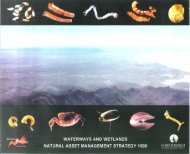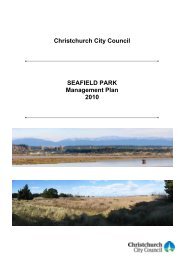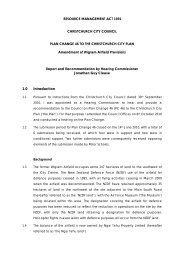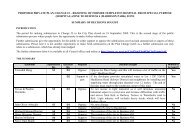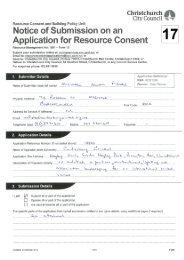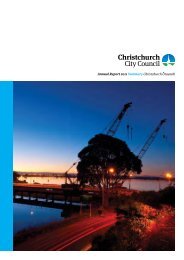Akaroa Historical Overview - Christchurch City Council
Akaroa Historical Overview - Christchurch City Council
Akaroa Historical Overview - Christchurch City Council
Create successful ePaper yourself
Turn your PDF publications into a flip-book with our unique Google optimized e-Paper software.
Figure 5.37. Hughes Family Hotel was one of a number of facilities that provided<br />
tourist accommodation in landscaped grounds. Ref: 1683-1<br />
Horticultural ventures: “villainous wines and uncertain cheeses”<br />
<strong>Akaroa</strong>'s well established gardens were seen by new immigrants as an indication of rich<br />
and productive soil and for many this was the encouragement they needed to settle in<br />
the town. From the late 1870s a number of Chinese market gardeners had established<br />
themselves at the entrance to <strong>Akaroa</strong> near Waeckerle's Hotel on Rue Lavaud. It is unclear<br />
whether these sites were already cultivated or were operating as commercial gardens.<br />
One, the garden of Sing Chow, was located on the edge of the Wai-iti (Balguerie) Stream<br />
in the area previously occupied by the naval gardens and it is possible that Chow worked<br />
a portion of this remnant cultivation.<br />
As well as the market garden landscape within the town there were specialist orchards<br />
and other equally impressive private orchards like those of the Rev. Alymer and of Dr<br />
Watkins and his nurseryman son, Stephen. These men, along with others from<br />
Takamatua (German Bay), were exporting much of their fruit as confirmed by<br />
advertisements appearing in Dunedin and <strong>Christchurch</strong> papers for <strong>Akaroa</strong> fruit, jam and<br />
butter from the 1860s. Dr Watkins' other son, Henry, <strong>Akaroa</strong>'s dispensing druggist, was<br />
also a wholesale and retail dealer in jams, jellies and fruits and raspberry and other<br />
syrups as well as grafted fruit trees. 111 A number of the French settlers were sending<br />
large quantities of their walnuts and grapes out of the bay. Wine was made locally with<br />
peach wine a specialty of the town, although 1880s reports of <strong>Akaroa</strong>'s “villainous wines<br />
and uncertain cheeses” suggest that these may have been an acquired taste. 112<br />
The potential for other revenue streams for the <strong>Akaroa</strong> economy was investigated in the<br />
late 1870s and a number of new horticultural initiatives were proposed. The first of<br />
these, a sericulture trial, was promoted by the Government in 1881 and two-hundred<br />
and fifty white mulberry trees from Sydney were planted around the boundaries of<br />
properties and paddocks in the town. Although no white mulberry trees are known to<br />
have survived from this trial, three black mulberry trees are noted in the town, two on<br />
William Street and one on Seaview Avenue. Their size suggests that they may date from<br />
the 1880s if not earlier.<br />
111 Advertisement, Southern Provinces Almanac, in Allison, An <strong>Akaroa</strong> Precinct, p. 12<br />
112 Taranaki Herald, 7 September 1882, p. 2 ; Otago Witness, 10 July 1880, p. 6<br />
AKAROA HERITAGE OVERVIEW : SECTION 5 THE COLONIAL TOWN 1850 TO 1900 PAGE 72






